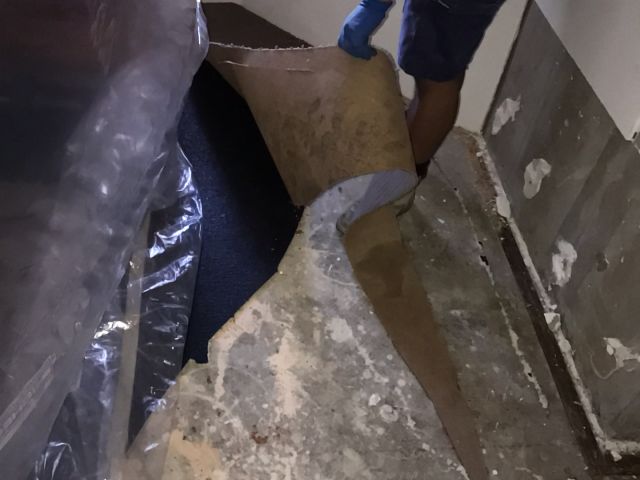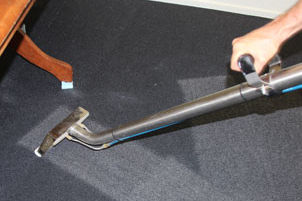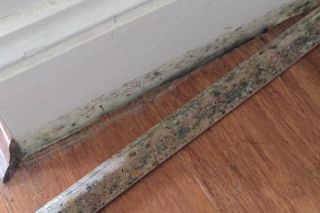How to Dry a Wet Carpet
The most important part of carpet drying is that you need to act quickly. Mould can grow in less than 24 hours. Unfortunately, active mould growth ins can trigger adverse health effects to the people exposed to it. If you want to keep your home clean and your family healthy, you need to come up with a plan. These wet carpets need to be dried and it has to be attended to right away.

Small-sized carpets
If the wet carpet is as small in size as a bath towel, you need to start the drying process by extracting water using a shop vac. Extract as much water as you can. You can also use different attachments from big to small to see which gives the best results. All you have to do is push the attachment against the carpet so you seal on the carpet until water is sucked from the pad. You also need a filter that’s capable of handling wet vacuuming. While the sponge-like filter works fine, paper filters will only disintegrate and clog.
After extracting the water, the next thing to do is to get some towels and extract the remaining water. Lay the towel on the wet area. You can jump or walk on these towels to push water to come out of the carpet pad. Replace wet towels and repeat the process until the towel is already dry when you step on it.
When you already forced much of the water to make the carpet semi-dry, the next thing to do is use a fan to allow warm air to spread generously across the wet areas of the carpet. If you have removed the underlay, you can simply peel the carpet back and dry the back of the carpet as well as run it to dry the floor and walls. Dehumidifiers should also be arranged in such a way that the air from it blows across the carpet.
Medium-sized carpets
If your carpet is less than 10 feet by 10 feet, that belongs to the medium category. The process of cleaning small-sized and medium-sized carpets are pretty much the same, except that in the latter, you need to expose the carpet pad.
After extracting as much water as you can with a shop vac, you need to peel your carpet back to expose the pad underneath. To do this, you need to position yourself at the corner of the carpet with the wettest area. Grab the fibres with your thumb and index finger and pull it up and back. If you can’t get a good grip, you can use pliers instead. Be careful not to yank too hard as this may cause the fibers to be removed from the carpet.
Once you have successfully separated and exposed the pad, extract water from it using the shop vac and towels. You can also use heaters, fans, and dehumidifiers to dry the pad. Be patient when drying the pad as this part really takes time before all the water dries up.
Your patience will really be tested when drying medium-sized carpets. Most of the time, this kind of carpet may take three days to dry fully.
Large-sized carpets
If your carpet is as big as a 100 square feet room, then that will already be considered as a large-sized carpet. For carpets of this size, you only have two options -- buy a commercial drying and extraction equipment or call a professional damage restoration company.
The sheer size of the carpet is enough explanation of why you need commercial-grade equipment to extract water from it. Also, you need to know the proper way of cleaning the carpet to keep it from smelling and keep the moulds from growing. And take note that even if you use high-tech cleaning equipment, drying large-sized carpets may take a minimum of three days. Apart from that, you also need to have a significant water supply to clean it thoroughly. The pad alone can already take two days to dry, too.
The concern escalates when water from the wet carpet already wicked your plasterboard up. Since you can’t see or feel this, you’ll need to use an infrared camera or moisture meter to check if your walls are wet. If they are, then you need to dry it too before moulds start feeding on it.
Why you need to have your carpets dried
Aside from the foul smell that will circulate the room, mould growth is another big reason why you need to have your carpets dried right away. When you cannot detect the moisture and moulds start to thrive in your property, you will not damage the surface and structure of your home, you also expose yourself and your family to health risks brought by these stubborn moulds. If you have kids, older people, or family members with respiratory problems, the threat brought by mould doubles. And later on, if you still can’t address the problem and your house gets terribly damaged, you can’t claim reimbursement from your home insurer.
It’s unfortunate to think how a simple issue such as getting your carpet wet can quickly escalate into a problem that can compromise your health, home, and finances. This leaves one thinking that indeed, cliche as it may sound, an ounce of prevention is way better than a pound of cure. Have your wet carpets dried today and avoid health and financial repercussions tomorrow.
How We Can help
NLR provides wet carpet drying services to Brisbane and Sydney regions with a 24/7 immediate response service. If you are unsure of the costs involved, we can run you through the costs to dry over the phone as well. We can also bill the insurance company directly.



